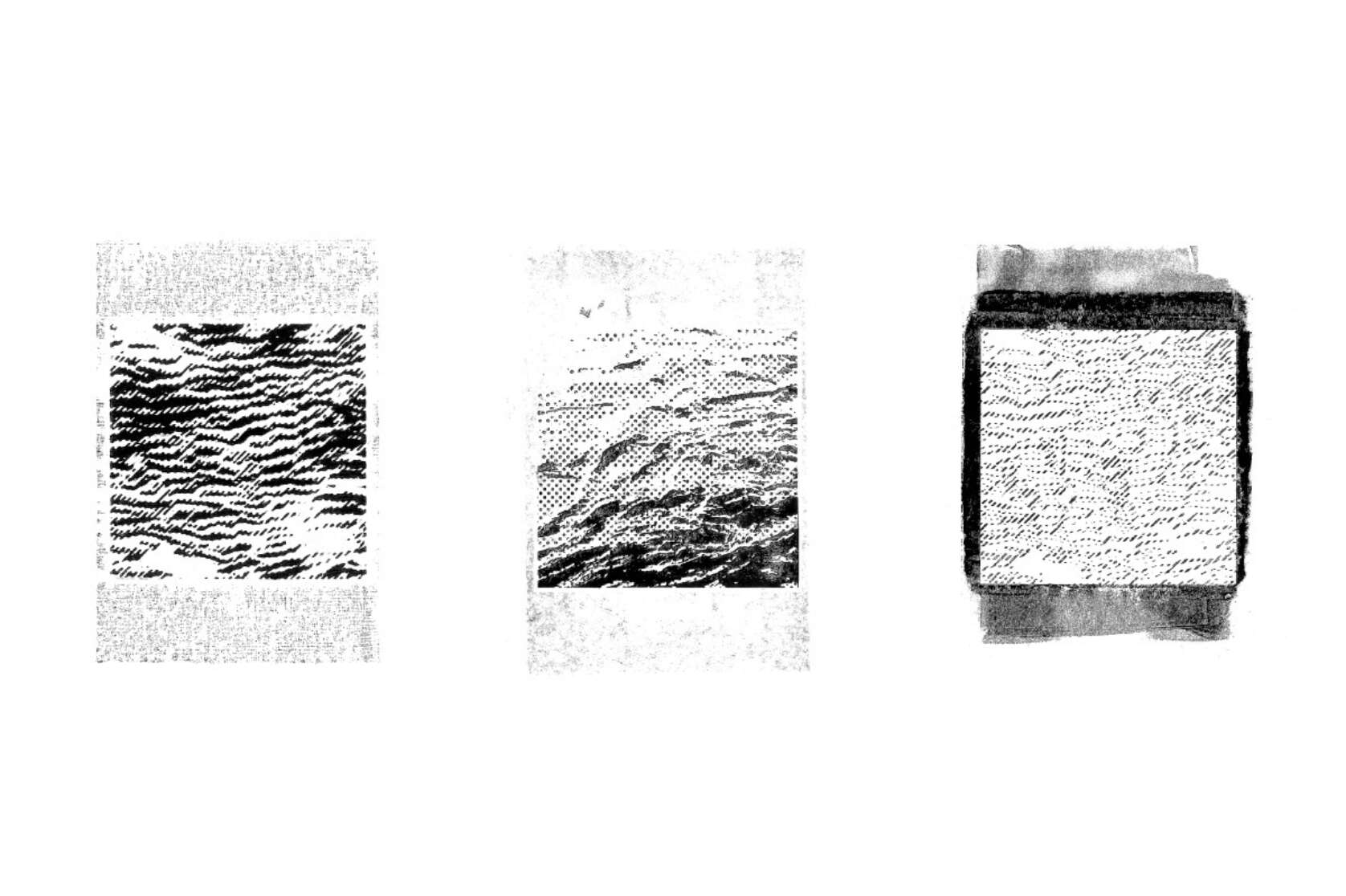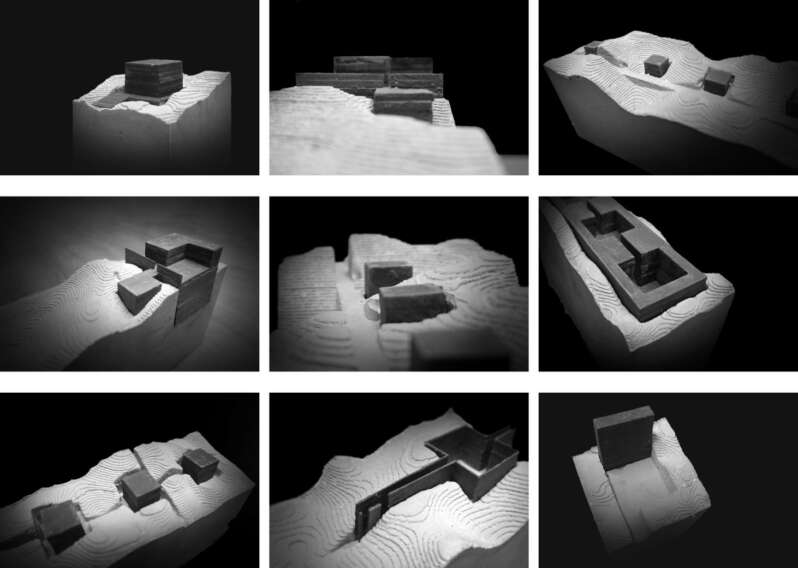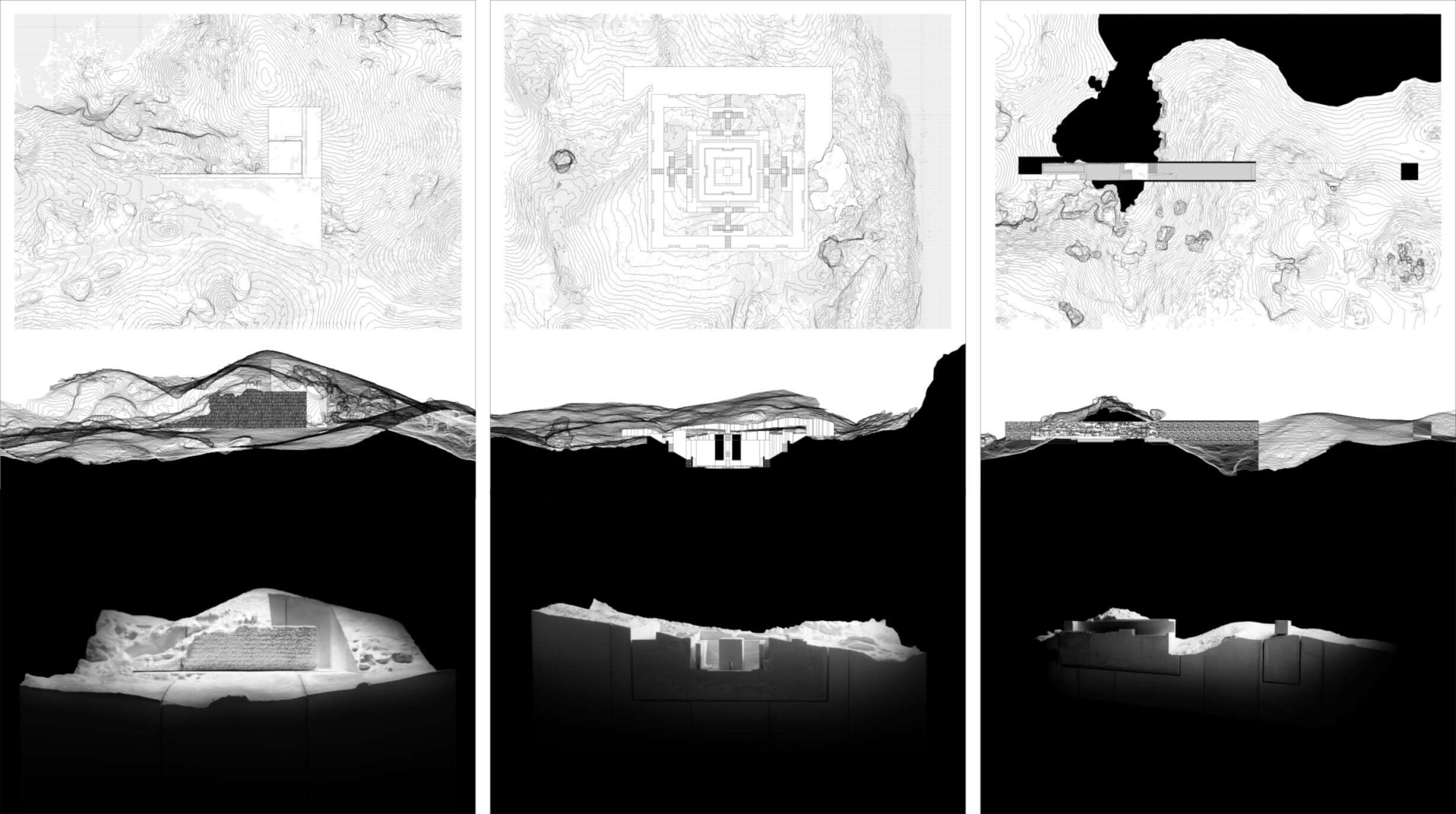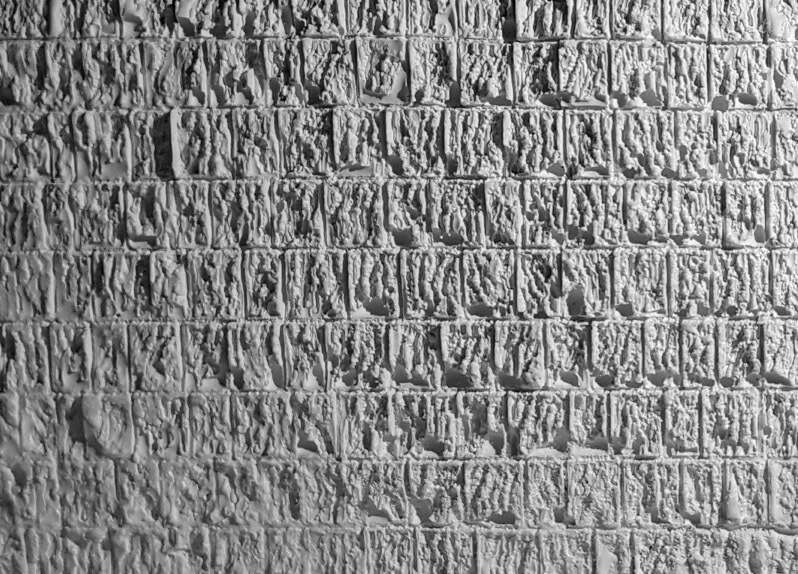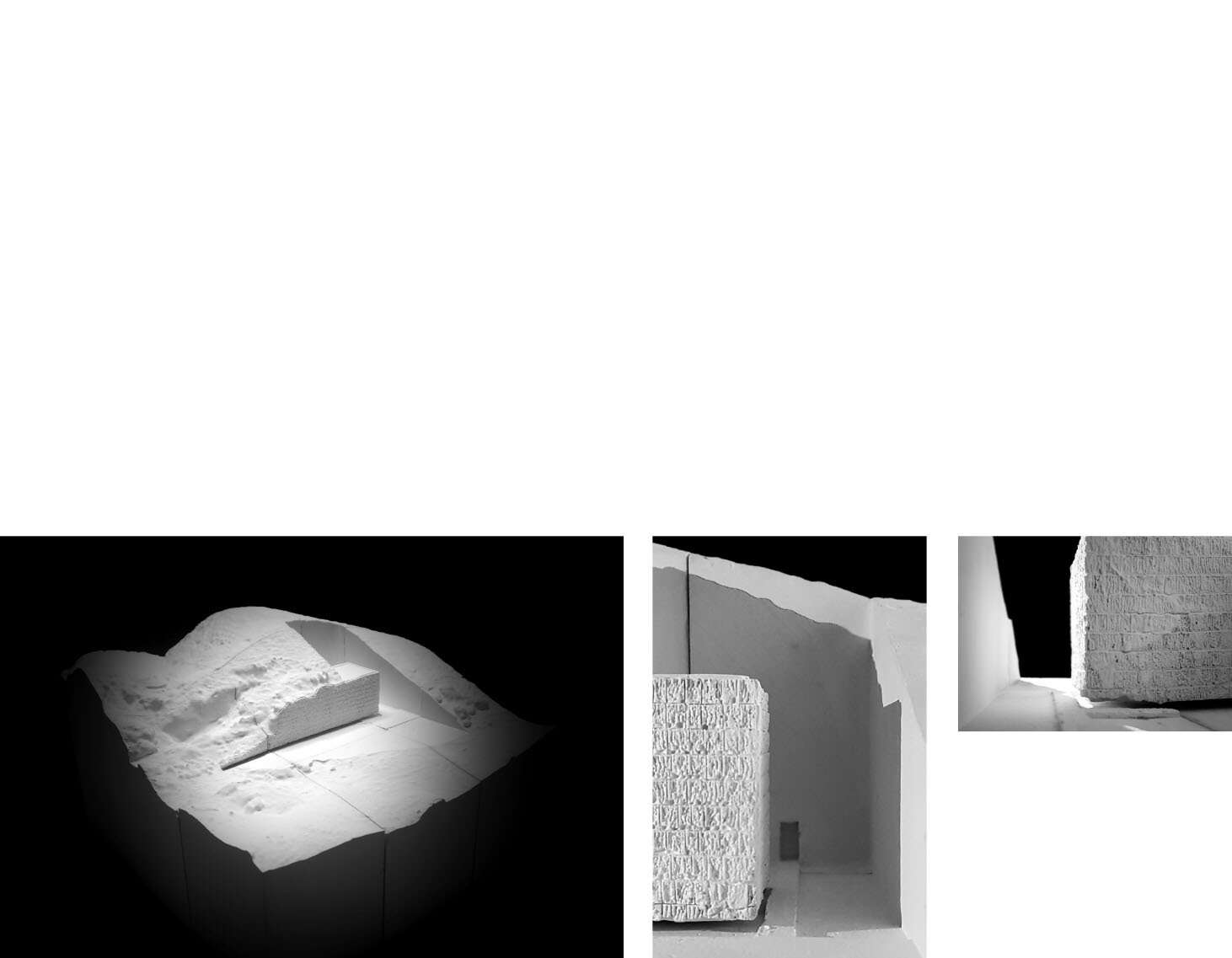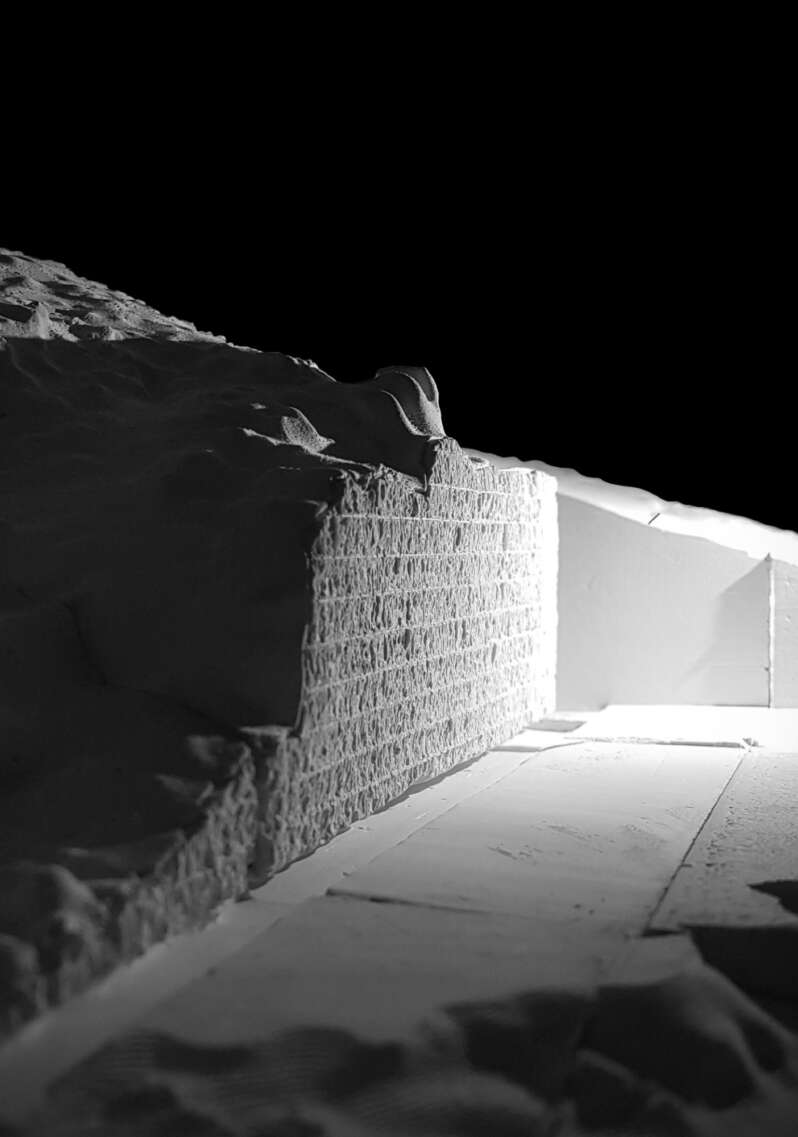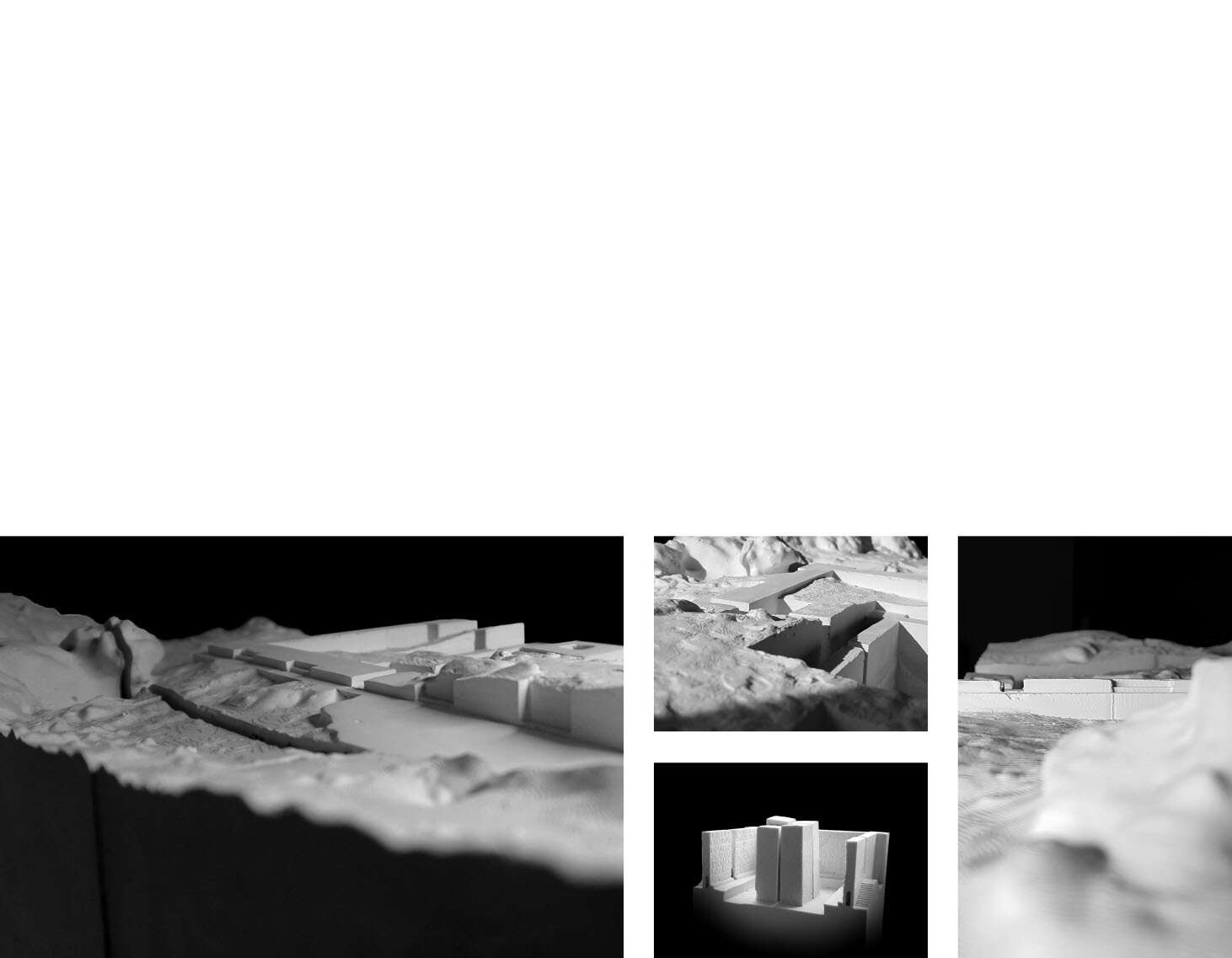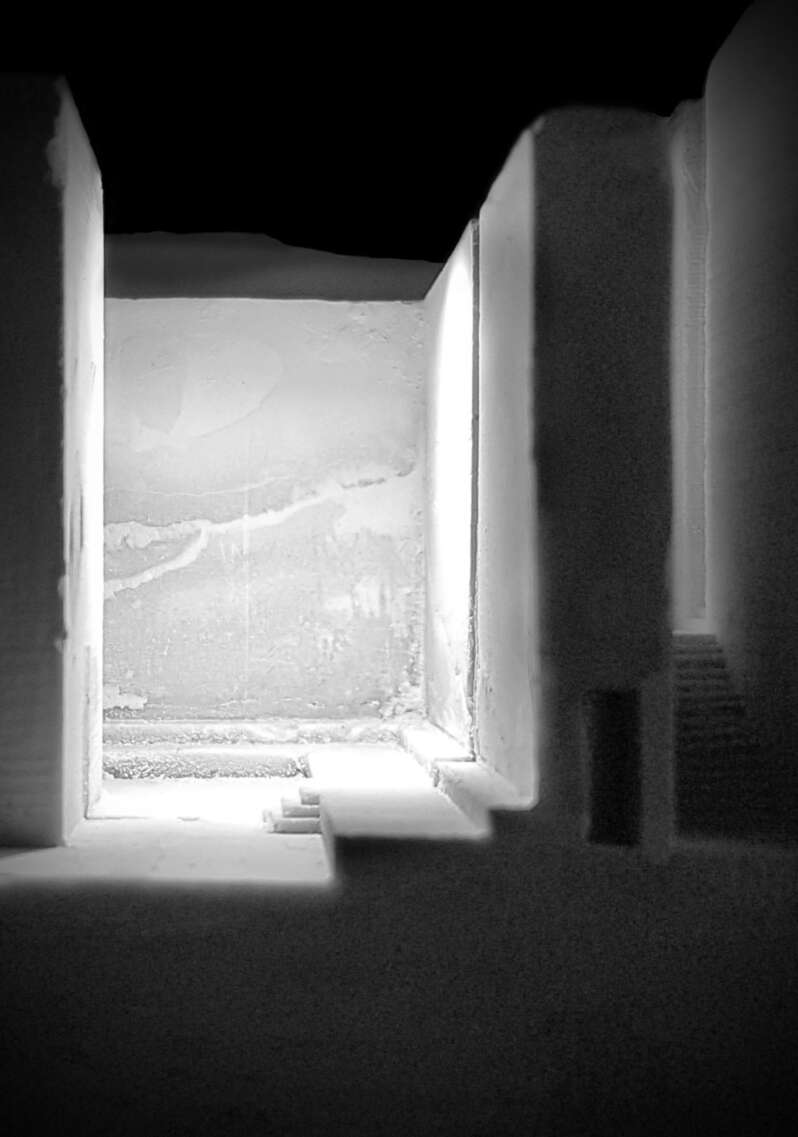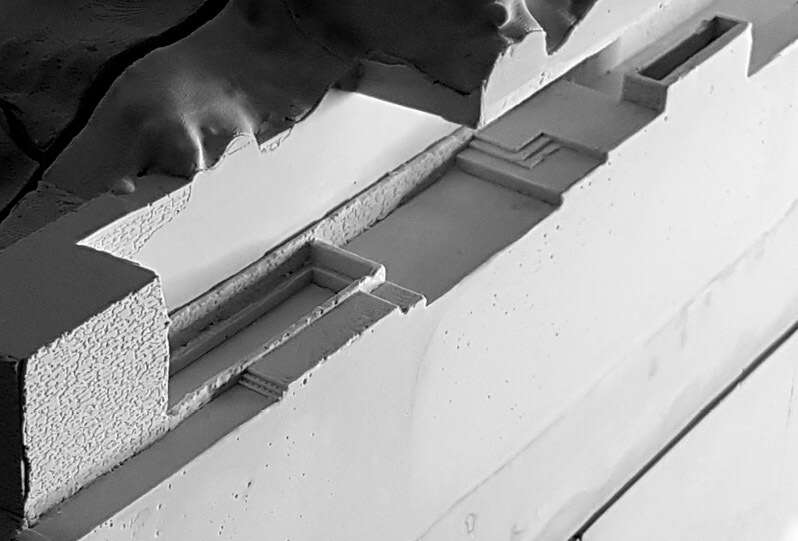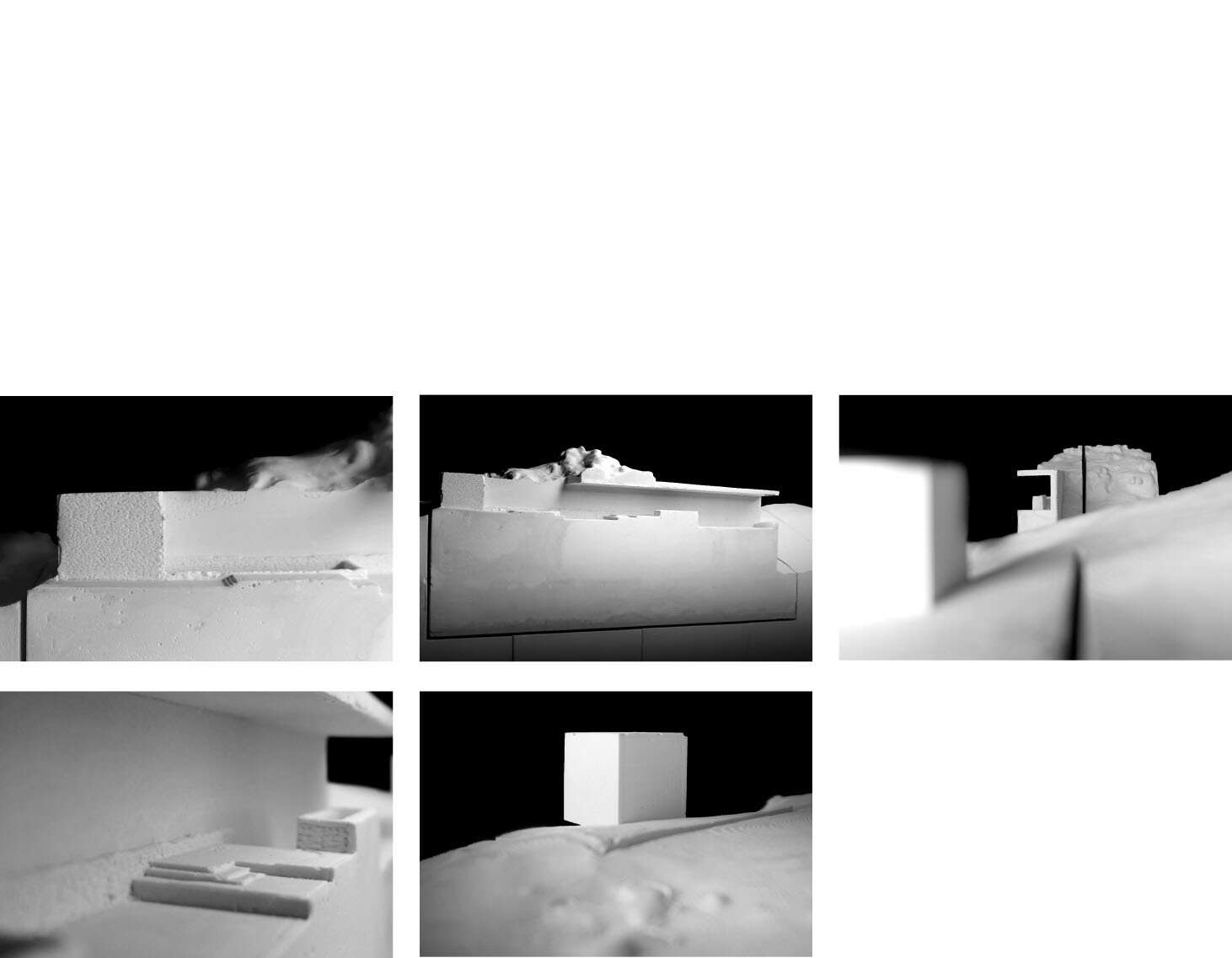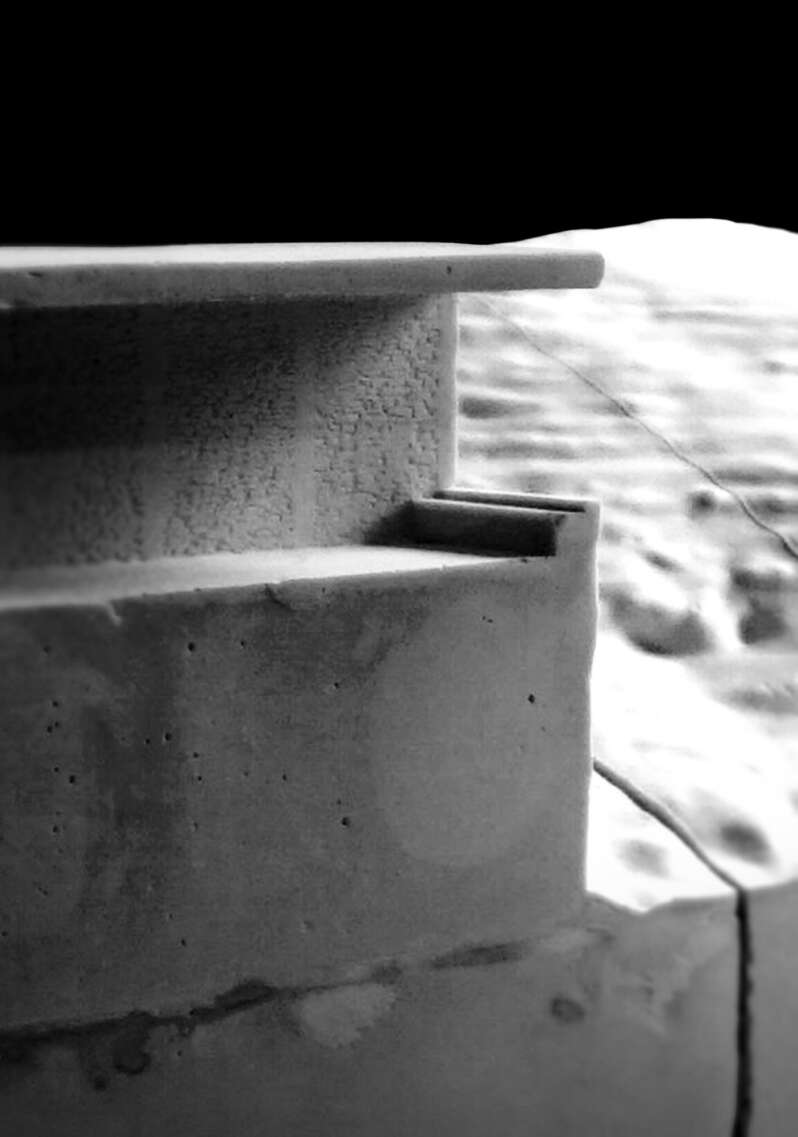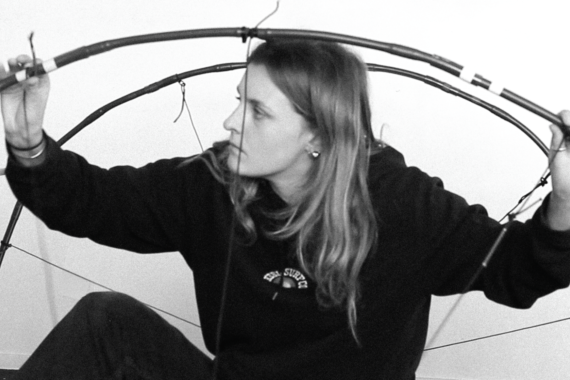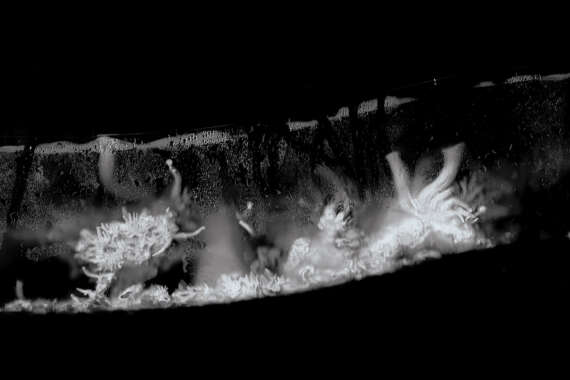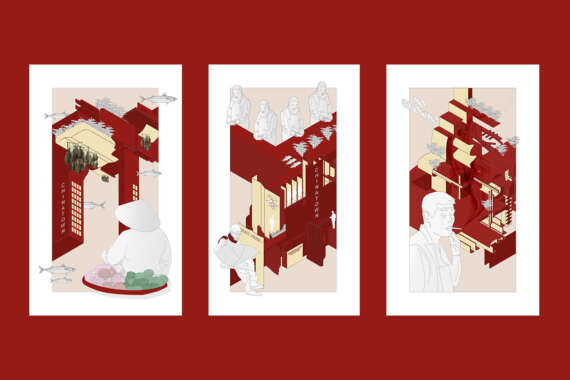Taking a theoretical approach that suggests the episteme of our practice might lie in an ability to connect two great paradigms of knowledge: ‘Archē’ and ‘Technē’, which form the etymological base of ‘archi-tecture’ in Ancient Greek. The thesis develops philosophies which revitalise materiality with agency and applies them to a design process.
Through imprinting, model making and the casting of plaster, this project builds towards three abstract artefacts which are models of phenomenological and existential questioning at an isolated site in the sublime rocky landscape of our Northwest Waikato.
Each making combines aspects of knowing and unknowing, allowing indomitable matter to flow forth into moulds and harden into anticipated yet not entirely predictable forms. They thus surprise and capture our senses, asking to be filled with meaning and appealing to our subjective nature as emotional human beings.
By allowing for a combination of these domitable and indomitable praxis to occur in our work, and recognising the hegemony of digital simulation and its inability to account for the fundamental qualitivity of nature, perhaps we could start seeing the world as full of meaning once more.
The emerging role of the designer then might not be to make products that we ignorantly call architecture, but to build connections among us that ask us to think, be inspired, and fill an empty world with meaning.
